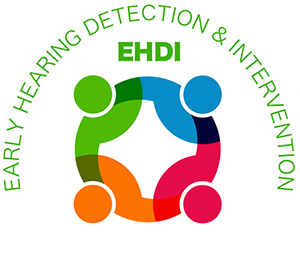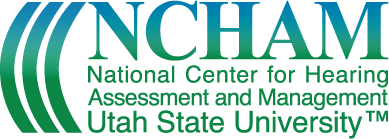Early Intervention intensity for children who are deaf/hard-of-hearing: Beyond EHDI benchmarks
Presented by: Dr. Jareen Meinzen-Derr
When: August 20th, 2020 | 12:00 pm - 1:00 pm MT
Description
Although earlier receipt of early intervention (EI) is associated with improved outcomes, little is understood regarding how content, intensity of EI services impacts outcomes. This talk will focus on data from 1262 infants identified with hearing loss (born 2008-2014), enrolled in EI in the state of Ohio. EI services potentially associated with hearing loss (HL) were selected. Cumulative service exposure, from the Individualized Family Service Plan, was defined as total hours, from EI enrollment to exit, for a specific service and all selected services combined. The top 5 services children received while in EI included service coordination (89%), habilitative services for HL (66%), special instruction (65%), speech-language (54%), and family training (39%). The median cumulative EI hours for top 10 services combined was 57 [interquartile range 28-112] with 25% of families receiving 112 hours or more throughout EI duration.
Factors associated with receipt of different services included (but not limited to) insurance, maternal education, diagnosis age, HL severity. By preschool, children who had received any habilitative services for HL (vs. none) and children with greater time spent in these services (highest quartiles) had significantly higher pre-literacy picture naming scores over time after adjusting for potential confounders. In kindergarten, children with greater time spent in habilitative services for HL (>18.6 service hours) were more likely to demonstrate kindergarten readiness. Higher levels of other service types did not coincide with better outcomes. Although children who enter EI at earlier ages have improved outcomes over entering later, by evaluating EI service types and intensities assigned, we can understand outcomes from a new perspective.
Learning Objectives
- Understand intensity (exposure over time) of different service types provided to children who are D/HH in early intervention.
- Identify demographic and child characteristics associated with receipt of services, as well as receipt of higher levels of services.
- Recognize association between specific EI service types and outcomes of children who are D/HH
Presenter

Dr. Jareen Meinzen-Derr's career goal is to improve outcomes in children who are deaf/hard of hearing (DHH). As such, she is focused on enhancing communication and social functioning which leads to increased independence for children who are deaf/hard-of-hearing and leads a multi-disciplinary team spanning across numerous sub-specialties to implement a randomized trial leveraging technology to improve language outcomes in this population of children. In addition to her focused research, Dr. Meinzen-Derr has long-standing collaborative relationships with faculty in divisions across Cincinnati Children's Hospital Medical Center, which broadens the scope of collaborations to a wide range of populations of children.
In addition to independent and collaborative research, Dr. Meinzen-Derr is the Director of the Biostatistics, Epidemiology, and Research Design (BERD) core of the Center for Clinical and Translational Science and Training at the Academic Health Center of University of Cincinnati and Cincinnati Children's. As BERD director, she is dedicated to helping ensure the success of researchers across the enterprise. She provides mentorship to junior and mid-career researchers, including K-awardees as well as dissertation committees at the University of Cincinnati. She has taught graduate level courses in epidemiology and biostatistics within the Department of Environmental Health, University of Cincinnati College of Medicine, spending over a decade teaching Introduction to Epidemiology.
Collaborators: Meredith Tabangin, Susan Wiley, Mekibib Altaye, Allyson VanHorn, Mallory Minter-Mohr, Nathan DeDino


